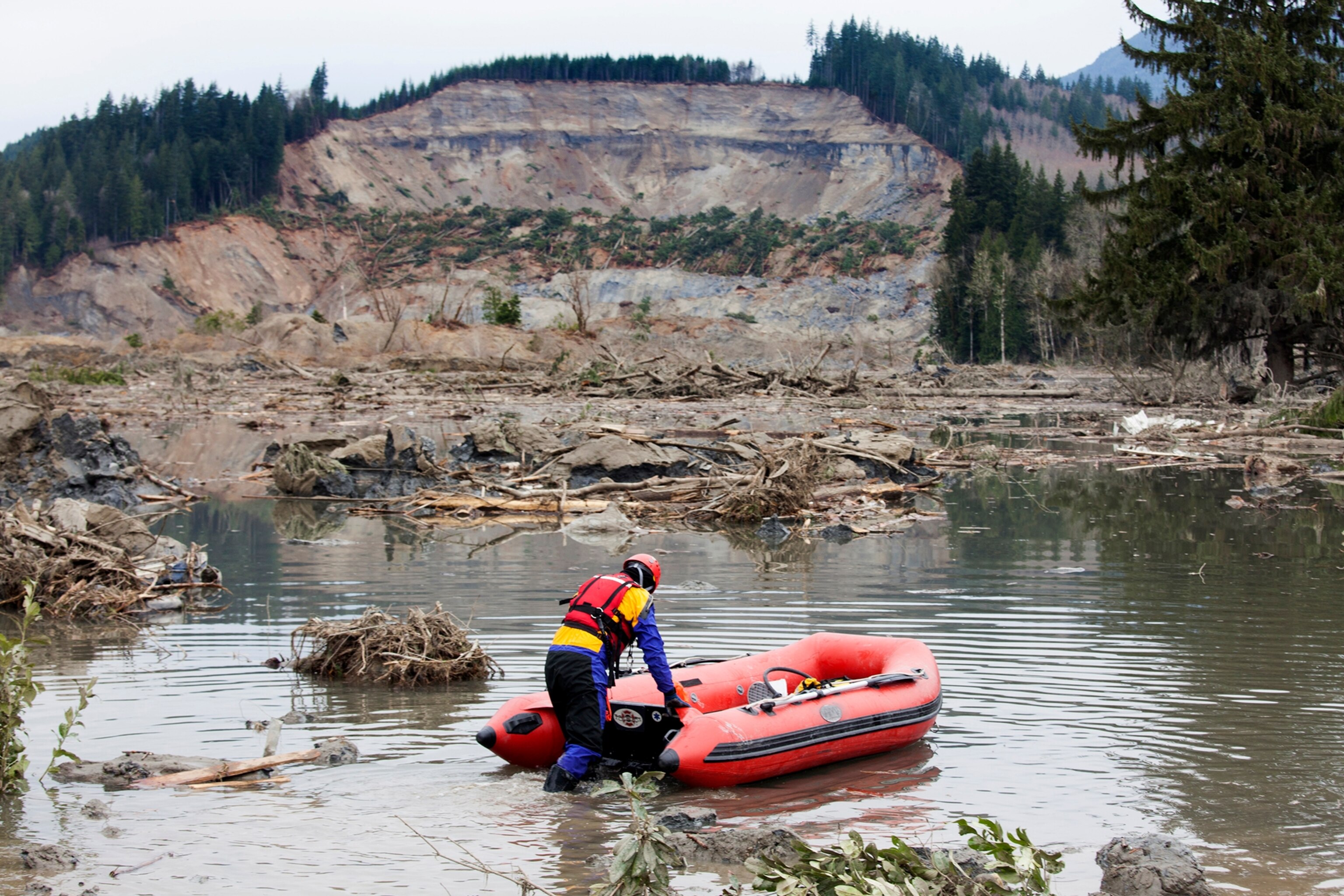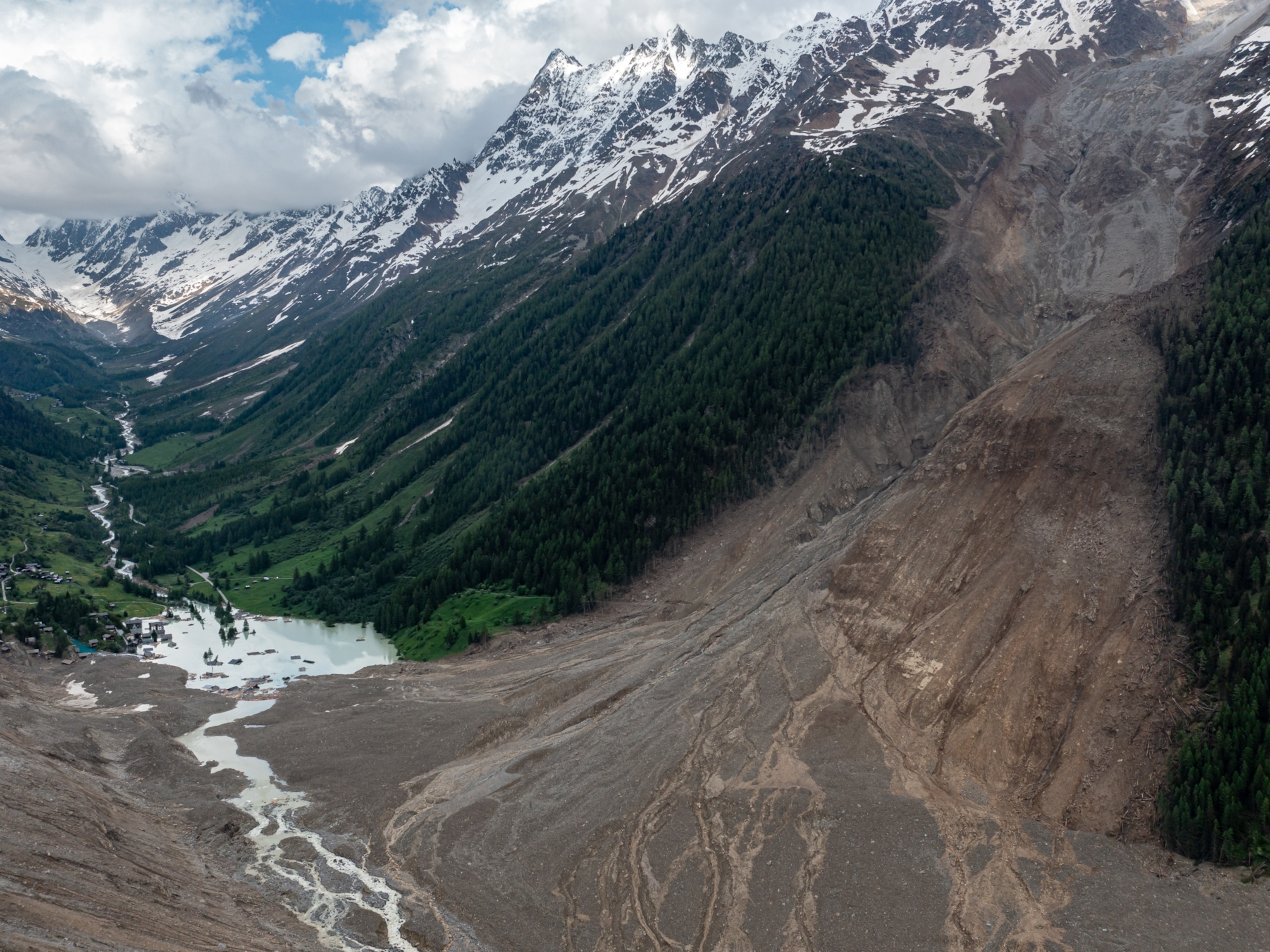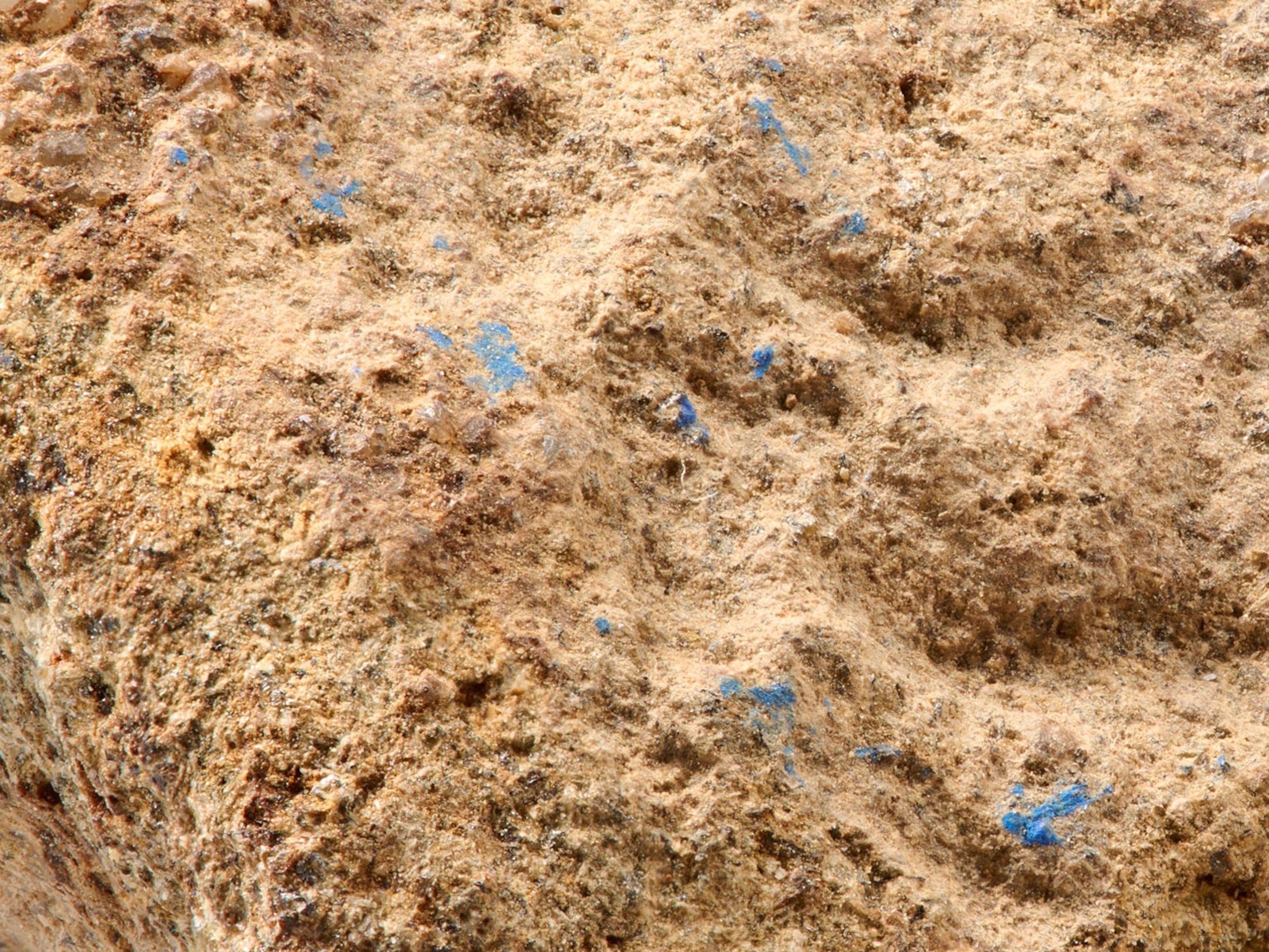
Baltimore "Sinkhole" Actually a Landslide
An expert explains how the two geological events are different.
When is a sinkhole not a sinkhole? When it's a landslide.
According to geologists, the block-long "Baltimore Sinkhole" that opened on Wednesday in a northeast residential neighborhood—injuring no one but pulling in several cars, sidewalks, and streetlights while forcing the evacuation of 19 homes—was actually a landslide.
It occurred a day after heavy storms drenched the region and dumped more than four inches of rain on the city. That saturation, coupled with gravity and the weakness of a 120-year-old retaining wall, washed a hillside on East 26th Street into a railway ravine next to CSX freight tracks.
It's the sort of slide "that happens all the time" when rain or burst pipes wash away underground soil, Maryland Geological Survey Director Richard Ortt told the Baltimore Sun. "Lots of [water] at great velocity will erode dirt."

Sinkholes, on the other hand, occur when the ground collapses into a void that forms when groundwater erodes subterranean rocks, says Daniel Doctor, a research geologist at the U.S. Geological Survey.
"Most often they occur when you have limestone or some other kinds of soluble rocks," he says. "The ones that pose hazards to humans are called cover-collapse sinkholes, where the ground collapses under its own weight and funnels down into caves below, like an hourglass." (See "Sinkhole Science: A Primer.")
The main difference between a sinkhole and a landslide, he says, "is that sinkholes occur over voids hidden from view beneath a flat or gently rolling surface—they generally don't occur on slopes. With a landslide, you don't need a void at all, just a slope or hillside. They typically occur along scarps—cliff faces or other kinds of sediment that are at a steep angle."
But like sinkholes, they need a catalyst. Mining and earthquakes can start a landslide, says Doctor. And deforestation can play a role.
"If you remove the vegetation or slow down the rate of runoff," he says, "[there's nothing to] absorb rain, and the soil becomes quickly saturated."
Water is the common factor between the two phenomena. "Strong hydrological events can trigger both landslides and sinkholes," Doctor says.
What happened in Baltimore, he adds, "was not a sinkhole—that's quite certain. It was a landslide, though not a natural landslide because it occurred along a train track highly modified by human activities. Some excavation had to have happened [when the tracks were laid] and some reinforcement of the retaining walls on either side of the track."
People who live along East 26th Street have been concerned about the integrity of the retaining wall since at least the 1990s. Some say the landslide was only a matter of time.
"My wife and I haven't been parking on the side of the street for years because we knew it was going to happen," retired engineer Jim Zitzer told the Baltimore Sun.





